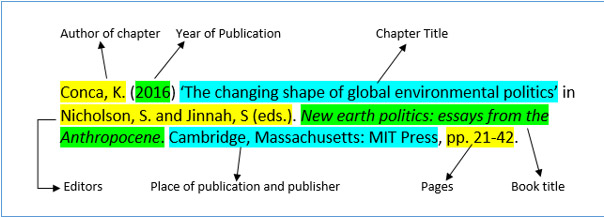
You will then have completed the course
Why aren’t all referencing systems the same?
Over the years thousands of referencing styles have evolved, all aiming to make it easier for readers to find the sources used in books and articles. Different people like different styles for different reasons and no single style has ever come to prominence over the rest. Each variation will have its particular quirks, but most are based on the numbered or author/date systems.
At university, you will have to know how the basic systems work either because you will be expected to use one in your assignments, or because the texts you are reading will use both styles. Don’t panic! The basics are easy, and reading references will become second nature.
Understanding references
So far, we have looked at the two main types of referencing and seen how they work in practice. The lists (bibliographies) you have seen at the end of articles and books contain information about other books, chapters and articles. As we shall see, when putting together a bibliography it is important that each reference follows the rules for the style you are using. In practice, this means that the dates, authors, titles and so on are in the same place in each reference. Apply the rules consistently, as getting this wrong can cost you marks.
Can you think why arranging everything in the same order is important? Why do you think some parts are in italics?
One of the reasons is to make scanning a long list as easy as possible. An academic can often discover a great deal about a piece of work just by scanning a well formatted bibliography. For example, he or she can quickly identify books and journals consulted by focusing on the italic type. If the publication dates are all in the same place they can easily see if the student has consulted recent research.
Journal References
As explained earlier, there are many different referencing systems or styles. To make things easier we are going to look at just one kind – you may need to work with different styles, but the key thing to appreciate is how important it is to be consistent when you reference.
A reference will contain all the information needed to find the piece of writing to which it refers. To find a journal article we need to know the following:
Author(s), Article Title, Publication Year, Volume, Issue (if available), Journal Title and Page Numbers
When put together in a Harvard style system they will look like this:
Valente, M. (2016) 'Proper time and the clock hypothesis in the theory of relativity', European Journal for Philosophy of Science, 6 (2), pp. 191-207
All of the elements appear in a specific order:

Academic books and articles will frequently have many authors – sometimes into double figures. To make referencing neater, bibliographies and citations will often not list all of the authors, but instead give the names of the first author and then put et al. This is an abbreviation for the Latin phrase “et alia” which means “and others”.
For example, the following article has seven authors, but only the first or lead author is given in the reference:
Gibson, B. et al. (2018) ‘A “Pathology Explanation Clinic (PEC)” for Patient-Centered Laboratory Medicine Test Results’, Academic Pathology, pp.1-5
Book References
A reference to a book by a single author will look like this:
Holmes, A. (2006) The shaping of Ulster Presbyterian belief and practice, 1770-1840. Oxford: Oxford University Press.

Edited Books
Many academic books are edited collections of essays. Such books will have one or more editors and an author for each chapter. These can be quite tricky to figure out when they appear in a bibliography, especially if the reference is to a chapter within an edited book.
This is what a reference to an edited book looks like:
Lees, C. A. (ed.) (2013) The Cambridge history of early medieval English literature. Cambridge: Cambridge University Press.

A reference to a chapter within an edited book will look like this:
Conca, K. (2016) ‘The changing shape of global environmental politics’ in Nicholson, S. and Jinnah, S. (eds.) New earth politics: essays from the Anthropocene. Cambridge, Massachusetts: MIT Press, pp. 21-42.
